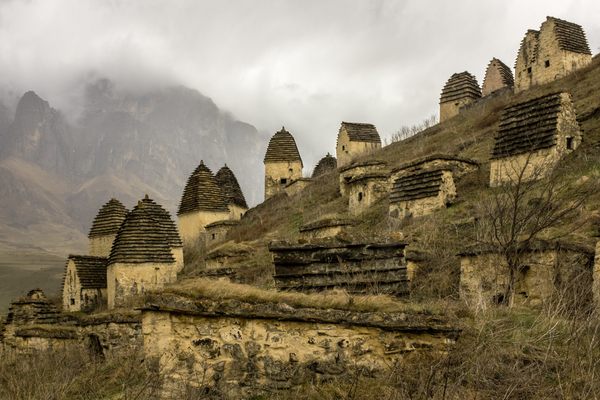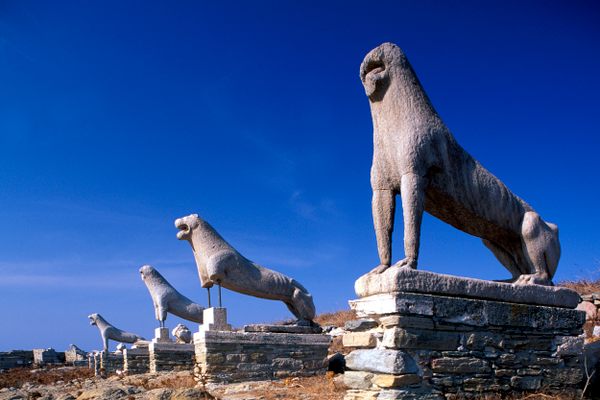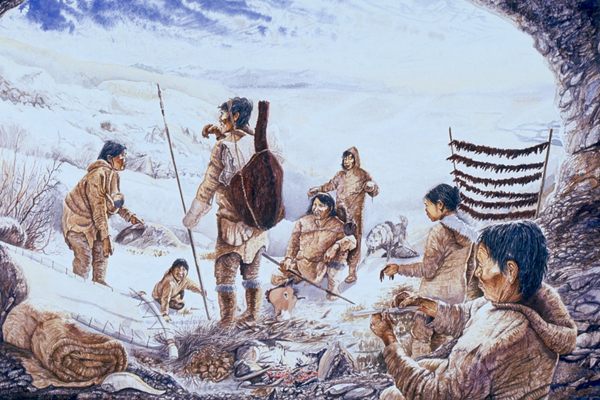Found: Archaeological Evidence of Bronze Age Lupine Initiation Rituals
Dog sacrifice, lawless war-bands, and coming of age on the Russian steppes.

For adolescent boys of the Late Bronze Age Srubnaya culture in the Russian steppes north of the Caspian Sea, becoming a man meant first going feral, like a wolf. They may have formed “youthful war-bands,” according to a new paper published in the Journal of Anthropological Anthropology, and spent time raiding, pillaging, and generally living free of stricture or consequence, before returning to become productive members of society. This is the theory posited by married archaeologists David Anthony and Dorcas Brown from Hartwick College to explain the unusual finds they uncovered over nearly two decades of work at the Srubnaya (“timber-grave”) settlement called Krasnosamarskoe.
In excavating the site, which was occupied from 1900 to 1700 B.C., they uncovered the remains of 64 dogs and wolves. This is unusual—no other known Srubnaya site has nearly as many. Early on, they hypothesized that it was a site where canid hides were processed, but something about the way the remains had been cut did not add up. The bones showed signs that the animals were butchered and eaten, and that after that the bones were chopped—for no practical reason—into similarly sized chunks.
“It was clear that bones had been cut in a very intense, very standardized way that had no practical function, so we thought about a ritual,” Anthony says. Working with a team of Swedish archaeozoologists, they also determined that the carnivores were killed exclusively during winter, further supporting that they had been killed for some ritual purpose. The dogs were also older, suggesting that they had been companions before they met their demise.
Together the clues lead the authors to hypothesize that Krasnosamarskoe was a ritual site, where young men killed, cooked, and ate their canine companions, in order to take on their fierceness and become warriors. This ritual would fit right in with many myths mentioned across Indo-European cultures, Anthony says. “We quickly realized that many Indo-European people shared a common initiation myth, which saw boys metaphorically turning into dogs or wolves to become warriors.” In Latin, these war-bands were known as luperci or suodales. They were also called kouros or ephebes in Greek, fian in Celtic, männerbünde or jungmannschaft in Germanic, and vrātyas or maruts in Indic.

After the ritual, these youths then had to live outside their communities and commit warrior-like acts, from raids to rape. Such barbarous rituals, Anthony points out, lie at the core of many foundational Western myths, such as the one about the birth of Rome. “We know that Romulus and Remus grew up in the wild, raised by a wolf. And more than that, the first citizens of Rome were a collection of wandering youth who had no possessions and no home, that the founders invited to live there.” It is no coincidence, he adds, that according to legend one of the first actions taken by the Romans was the claiming of women. “Seen from this perspective, the ‘Rape of the Sabine’—an incident from Roman mythology in which Romans committed a mass abduction of young women from other cities and regions—has strong parallels with the kind of rituals that Srubnaya warriors had to go through.”
Civilization, indeed.































Follow us on Twitter to get the latest on the world's hidden wonders.
Like us on Facebook to get the latest on the world's hidden wonders.
Follow us on Twitter Like us on Facebook